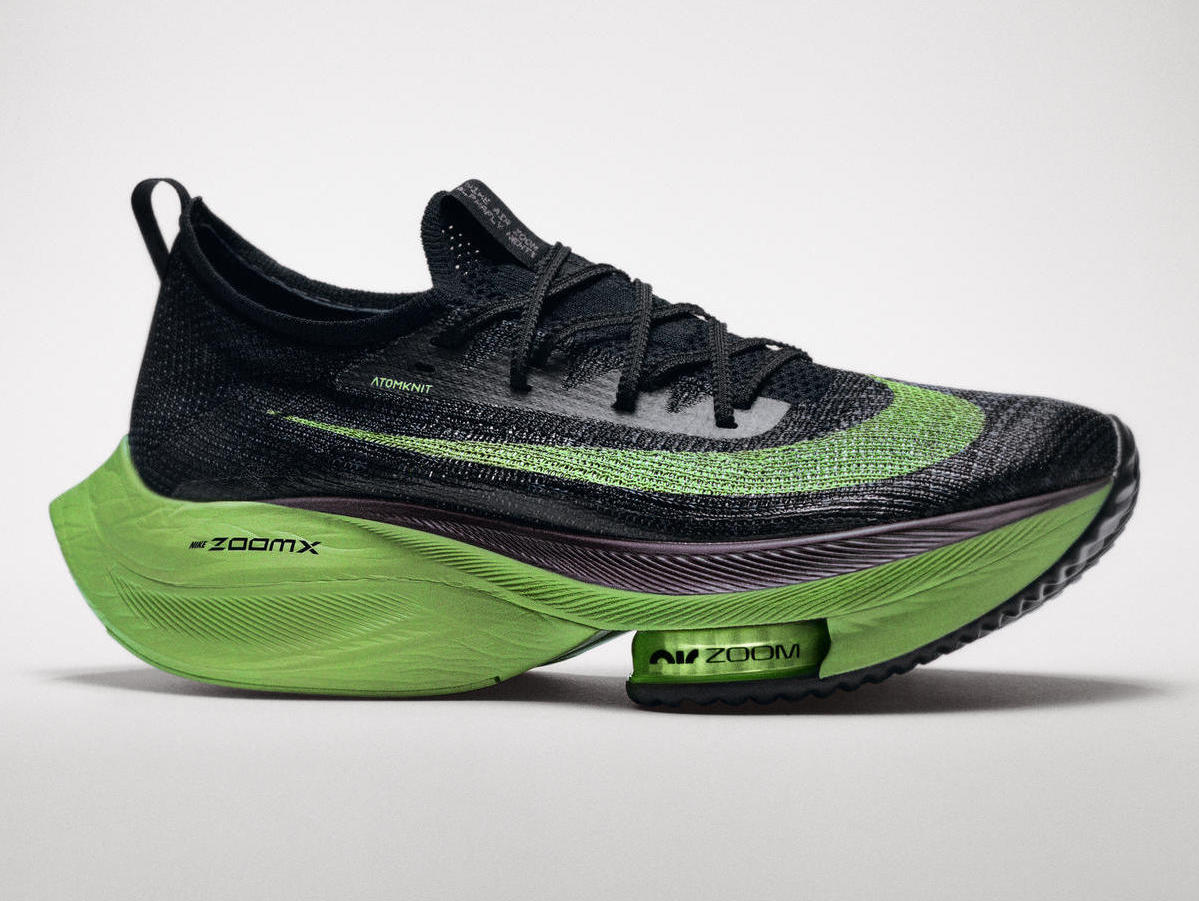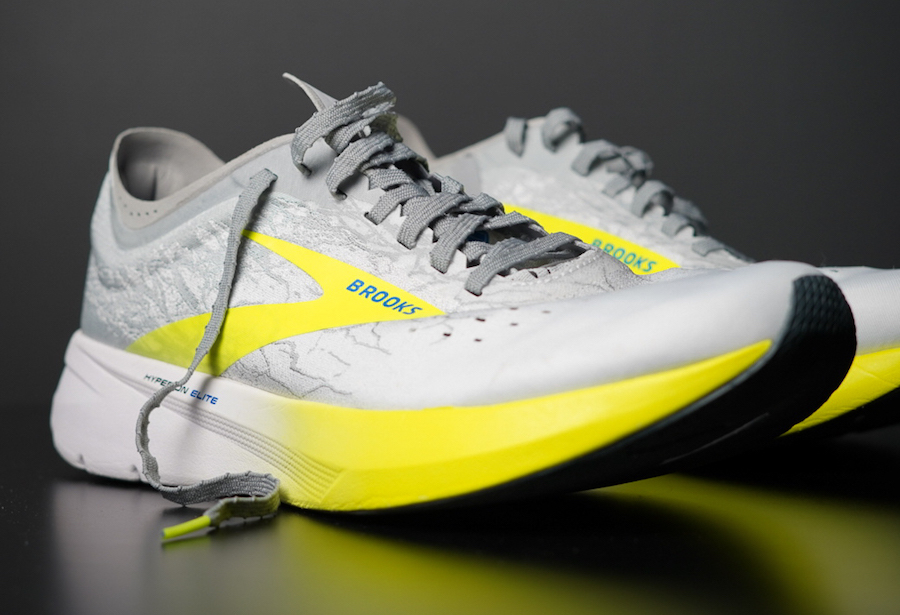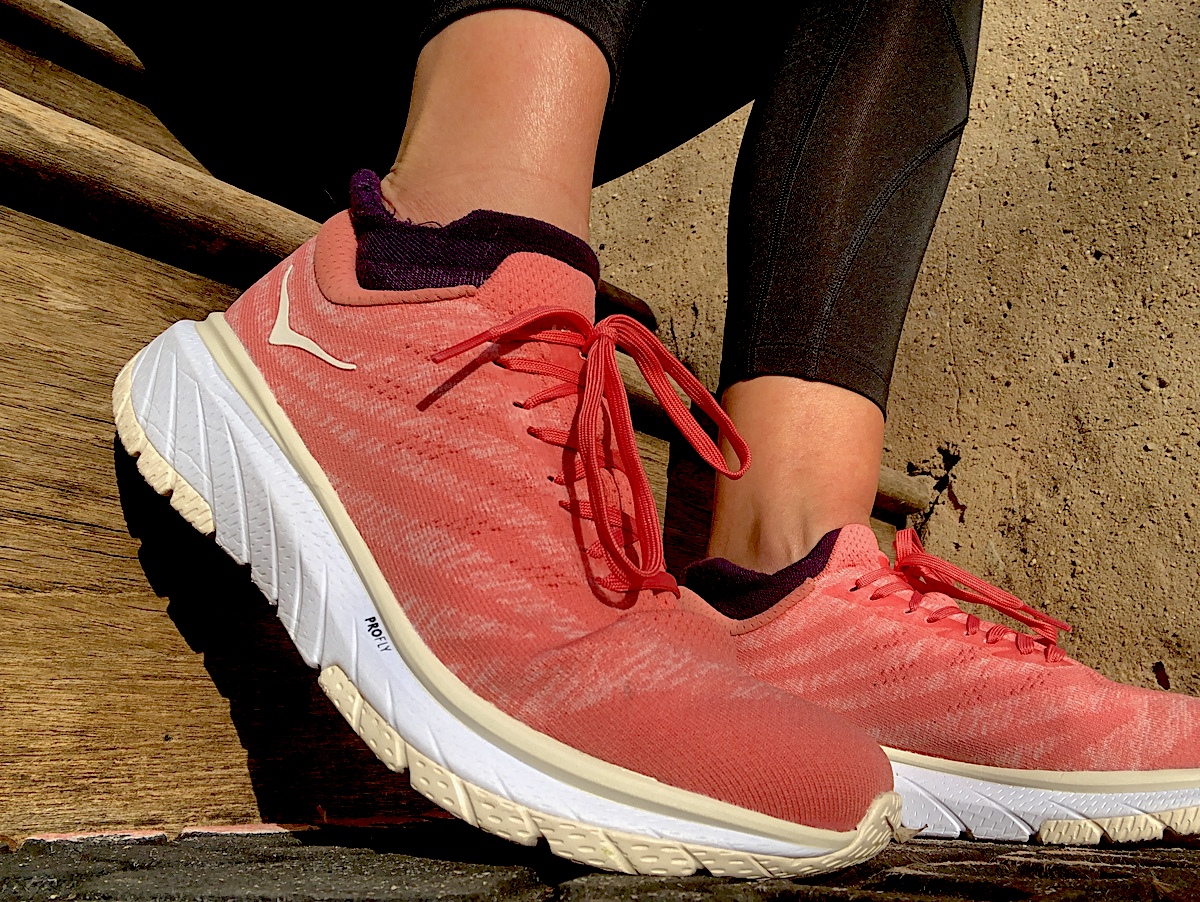
If there was any doubt before, it’s pretty clear now: Nike ain’t here to play nice.
Put them at the head of House Slytherin.
As we pointed out in our article last Friday after the World Athletics regulations on running footwear came out (and presumably a ban on the Alphafly), Nike had a backup plan all along.
Today that plan was unveiled with the release of the Nike Air Zoom Alphafly NEXT%, the next evolution in the chain of wonder shoes of recent years. According to Nike, the shoe features two Zoom Air pods in the forefoot, more ZoomX foam, and a single carbon plate. It releases February 29 to Nike Run Club members (incidentally, the same day as the U.S. Olympic Marathon Trials). Feel free to speculate.
Many thought the World Athletics ban was a death knell for Nike, a leveling of the playing field. With the release of the Alphafly, the gap has opened up significantly between other racing models and Nike. While most companies are only releasing their first iteration of elite carbon-plate racers in 2020, the Alphafly– assuming it outperforms the Vaporfly NEXT%– is years advanced in technological terms. (After Eliud Kipchoge broke the 2-hour marathon mark in October in a prototype version of the shoe, there’s no reason to believe it isn’t.) And yes, while some runners may be less affected by its technology, it’s inarguable that for the vast majority of athletes toeing a start line, it allows them to perform at a higher level than ever before.
That isn’t anything new for the Vaporfly line, and it’s been discussed in great detail over the last two years. But if the Alphafly does indeed outperform its predecessor, then it takes running dilemmas that were previously simmering and drops them straight into a pressure cooker.
For Tokyo-bound runners or major marathon elites, it puts them in an incredibly tough position. As sponsored athletes, they know the current models on their feet are not the best shoes out there on race day. And, news flash– runners aren’t exactly ripping 185 in their Maseratis down Mulholland Drive. A major marathon or Olympic podium finish presents opportunities beyond most runners’ wildest dreams. If the Alphafly does indeed perform better than even the Vaporfly NEXT%, then it presents itself as a deliciously juicy temptation in the garden of good and running.
Glory or honor?
The question lies squarely on the shoulders of the athletes who simply want to live a life of running. While athletes have routinely come to similar crossroads in many forms throughout their careers (um, doping, anyone?), there are few decision paths so obviously lit by green and pink (and now black) neon lights.
That’s not to mention the athletes’ sponsors. While we’ve seen homemade blacked-out Vaporflys here and there on start lines before, it would be an utter humiliation for Nike’s competition if the start lines of the World Marathon Majors and/or Tokyo turned into a veritable pirate’s bay of homemade murdered-out Alphaflys.
For amateur runners, the internet frenzy alone leads one to believe that Christmas came eleven months early. You thought you saw a lot of pink and green shoes on start lines in 2019? Even if the Alphafly comes in at $275, on race day you’ll see more pods than a laundry detergent aisle at Costco.
Because let’s be honest, in the back of everyone’s heads the last two years, there was a sense that maybe, just maybe this whole Nike Vaporfly thing was a little questionable. But with a firm ruling in place that deems not just the Vaporfly NEXT%, but the Alphafly NEXT% legal, the floodgates have opened. For anyone hating on a PR, a runner can pull up the World Athletic ruling and say- “Ha! Look at the rule book.” People will gun for those PR’s like there’s no tomorrow, cause tomorrow is already here.
It’s hard to say if the Alphafly is the pinnacle of progression, but as with any advanced technology (e.g. the phone you’re reading this on), previously unforeseen moral issues arise that will inevitably be carried out on a larger stage.
We can’t divine if the Alphafly is the end, or the beginning of the end, but we do know that running is the most natural expression of human endeavor. And if a shoe makes you faster at 25, 35, or even 45 years of age, let’s be clear– you’ve found a fountain of youth.
And you’d pay anything to drink from it, especially if someone says it’s legal.
Have something to say? Leave a Comment


Good shit Robbe
Much love.
Well put, Robbe. If anyone thought Nike didn’t have a Plan B, C, D, etc. for the Alphafly that would meet the World Athletics “clarification”, they were obviously wrong/naive/overly idealistic (insert your favorite descriptor here please). What is amazing to me, given how large Nike is, is how quickly they were able to produce the retail, World Athletics-acceptable version of the Alphafly and share it with the public. Quite a PR, execution, and tech/innovation coup simultaneously.
If I were a sponsored athlete … and at 73 I’m definitely not … I’d be putting a lot of pressure on my sponsoring non-Nike shoe manufacturer to catch up. Of course, the market share pressures will do that too!
It’s going to be interesting to see how the shoe tech “arms race” plays out. Regardless, runners at all levels win …. if the resultant shoe prices remain approachable.
Yeah I mean, it’s awfully coincidental that the ruling hit at 40 mm and the stack height of the Alphafly is 39.5. And just a few days after the WA ruling. I mean, it’s Nike, I think they had some idea of what was going down.
Nike may be years ahead, but with everyone else coming for that crown, I don’t think it will be years until the playing field is level again.
The entire thing is reminiscent of Speedo’s LZR Racer debut at the 2008 Beijing Olympics. Nike, TYR, Adidas athletes got permission from their respective sponsors to wear blacked-out LZRs. The LZR racer dominance was short-lived, as by 2009 Worlds everyone was showing up in full-urethane suits from a number of manufacturers, not just a few urethane panels. The amount of records being broken led FINA to enforce a textiles-only suit restriction the following year, which has stayed in place since.
I think FINA got the ruling right for the swimming world, let’s hope WA did the same for running
Jerry: I certainly hope you’re spot on; but the shape/configuration/parts (Air Zoom pads) of the Alphafly are hard to disguise/mask/camouflage. Somewhat different than swimsuits in my view.
That said, I think the whole mid-sole/upper/stack-height/cushioning-plus-propulsion, etc. ongoing “rethinking” will only be beneficial for all runners from a performance and injury reduction standpoint.
Just hope the “high tech running shoe arms race” doesn’t drive prices even higher. E.g. $250 for a shoe that some national class running bloggers say is good for one checkout run and then a marathon race.
I don’t know where I read it but it was spot on: What’s more likely, that there is a conspiracy going on, so hat Nike magically had the stack height spot on, or that a 30-billion-company has a few designs up their sleeves with the one that meets rulings being manufactured? I’m sure they had AlphaFlys in 29.5mm, 34.5mm and a couple other heights in their drawers ready to hit the market.
Well written – and I’d like to throw two things in here for further consideration/inspiration:
1: Compare running to e-sports and one sees how weak the “level playing field argument” is. If you want to make a living as a professional e-sporter you’ll need the new model of the best/fastest computer every year – and that means a cost of several thousand dollars. And despite that e-sport is for several years in a row now the fastest growing sport in the world, both in terms of competitors and viewers.
No-one is trying to regulate CPU capacity, or the continous evolution of computer technology, they’d be laughed out of the room if they tried. Sure, there are no Kenyan elite teams i Counterstrike or Dota yet, but trickle down effects have already made them have smart phones all over Africa and the poorest parts of the rest of the World, and when the smart phone e-sport games evolves there will be elite teams from all over the planet.
2: Nordic skiing solved a similar problem in the 80s when surface preparation techniques got so good that skate technique became possible, giving those embracing it an advantage. It was out-regulated for a while, but enforcing the ban was eventually found to be more problematic than intelligently embracing it. Nordic skiing now has two classes; classic and skate, which seems to be a solution everyone involved with are happy with. Biathlon choose the same path and has done even better, growing in popularity in Europe year by year, having evolved to an excellent live television sport.
All running shoes are to some extent giving the wearer an advantage over running barefoot. A simple solution for competetive running would be to have two classes; barefoot and shod, the former would give temperate countries an advantage back because of year-round climate training conditions.
Great piece, Robbe! Really well written and spot on!
With 26 years experience and an uncountable number of miles…At 600am and 30F, this shoe means nothing to me as I get ready for run #unknown, lacing up my $80 Boston 7s…Animals (including humans) have run thousands of years without this shoe….Just go run.